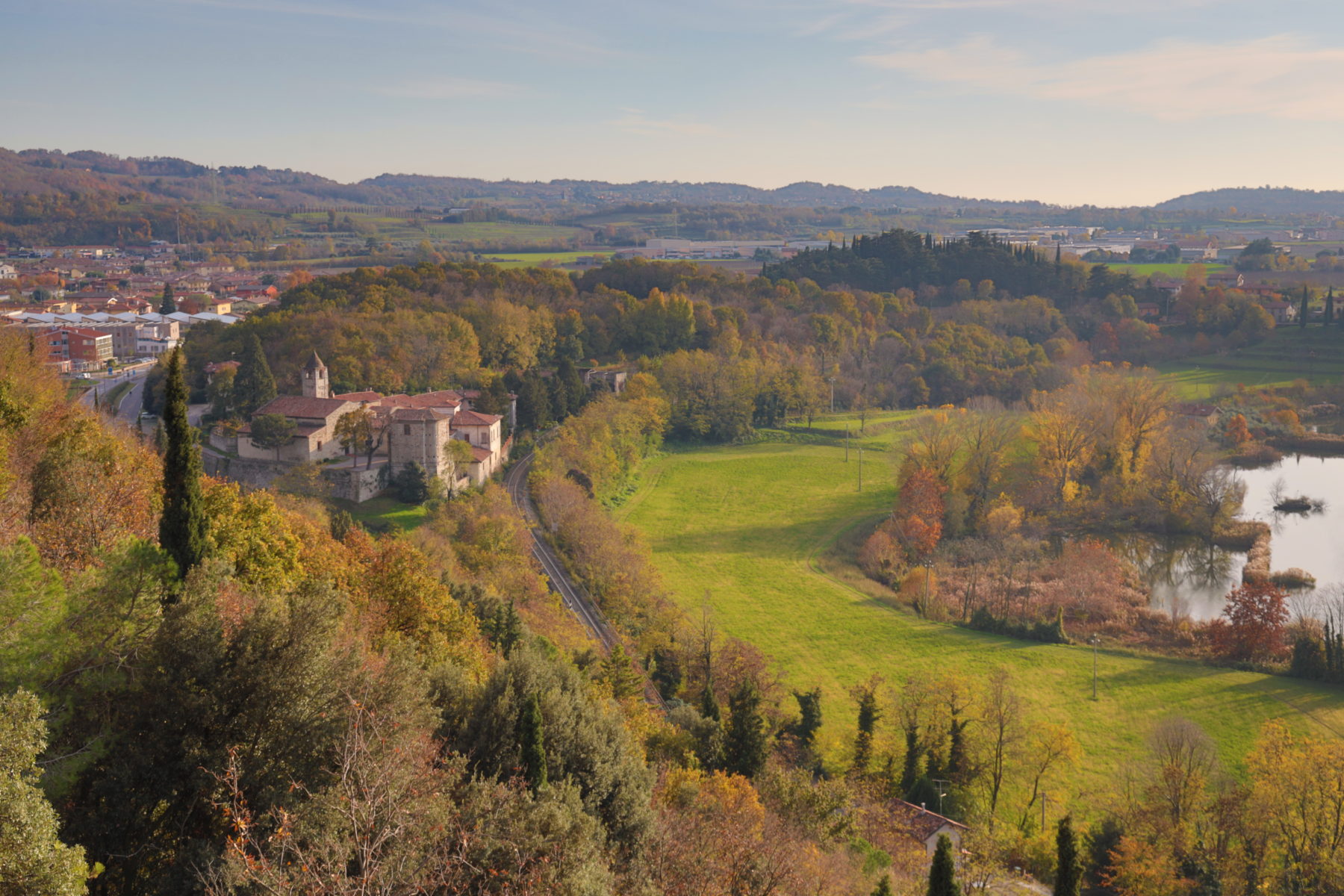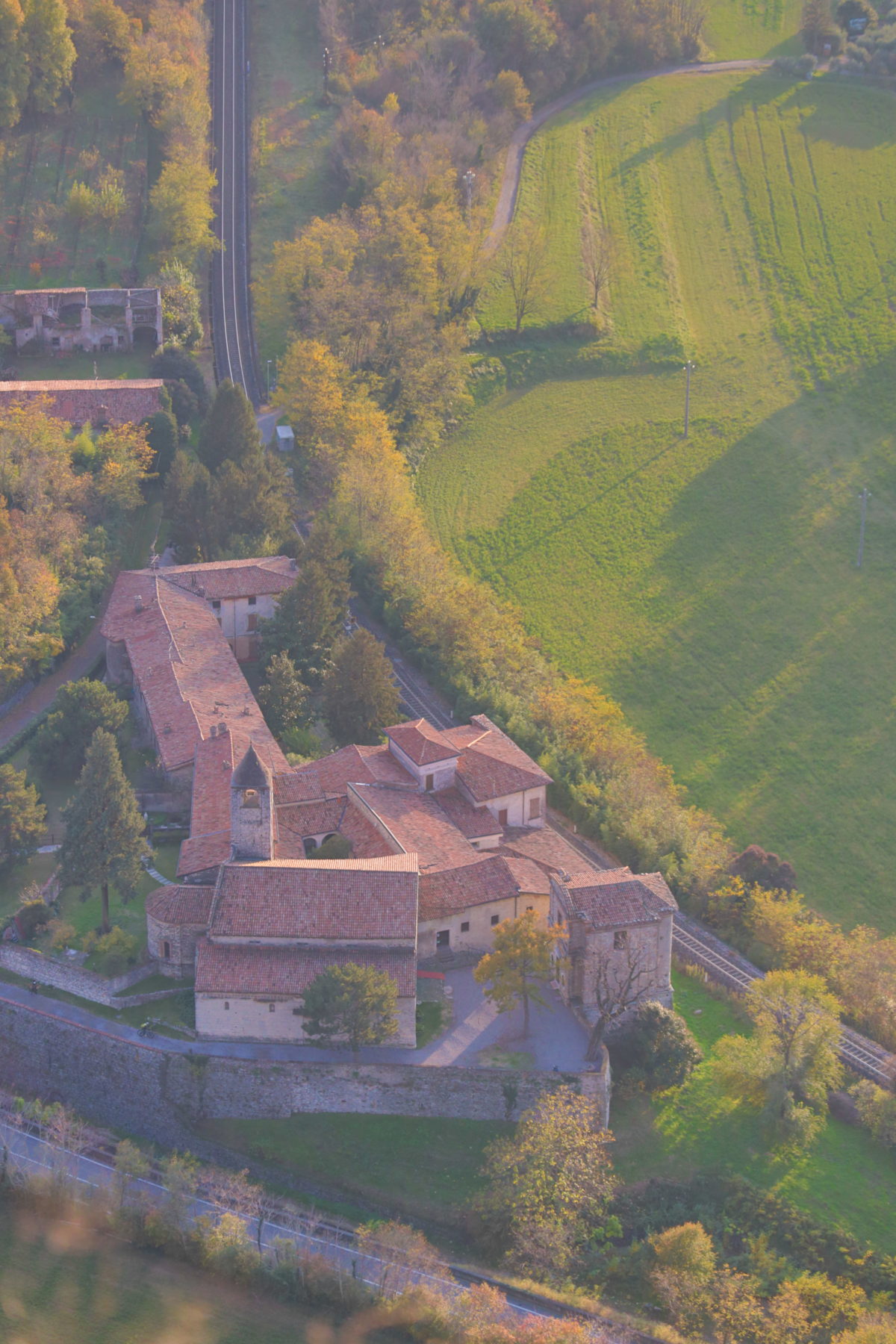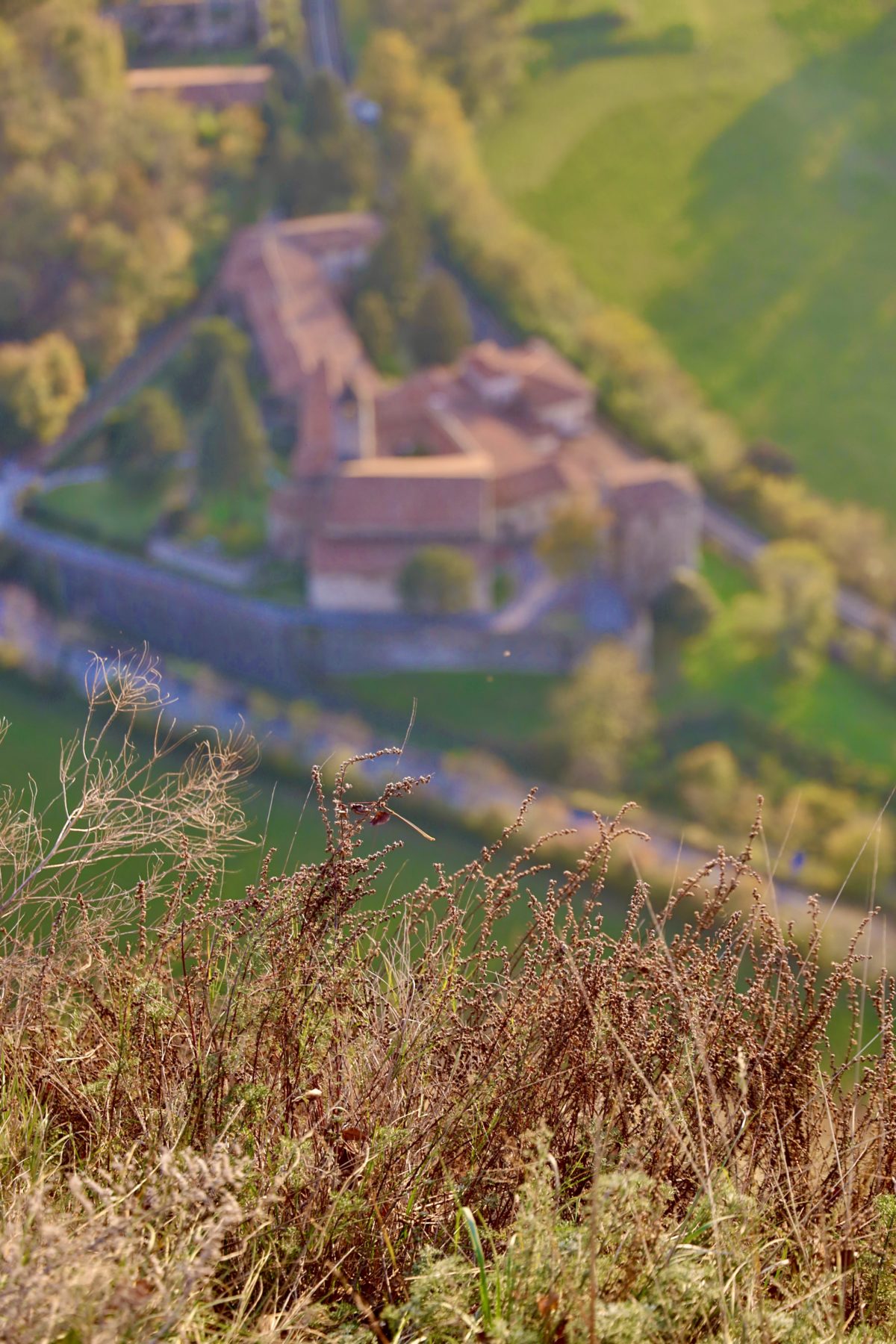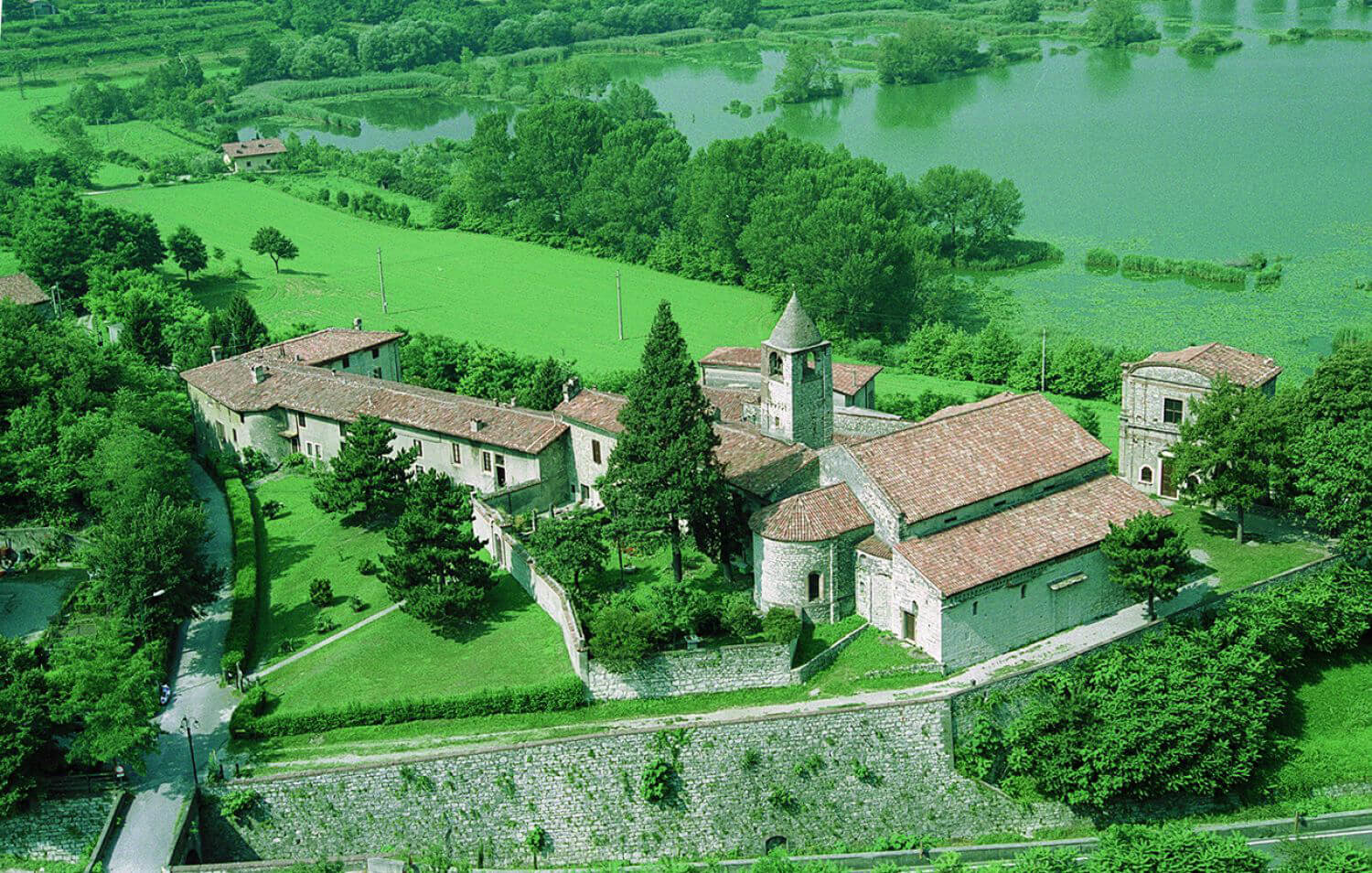




Monastery of San Pietro in Lamosa
From April 1st, 2023, it is necessary to pay a ticket to access the Monastery.
- From Tuesday to Friday: €1 per person
- Saturday, Sunday and bank holidays: €2 per person
- Free admission for children up to 12 years, disabled people and their guides, and people over 65 years old
- Tours with local guide: €5 per person (from Tuesday to Sunday, including bank holidays)
- Tours for schools: 25€ per class without local guide; 50€ per class with local guide.
Click here to book your visit.
Pets are not allowed.
Founded on a rocky rise overlooking the Torbiere and linked in name (Lamosa) to the marshy nature of the places, San Pietro is the oldest and the only still recognizable of the Cluniac foundations of Sebino.
In 1083, Teobaldo and Oprando de Tocingo, belonging to the Lombard aristocracy, donated the church of San Pietro in Provaglio to the monastery Cluny: from the text of the act, you can imagine that the church (which is said consecrata and hedificanda) had been initiated in the presbytery and that the altar had been consecrated, while the naves had not been built yet. Archaeological investigations have made possible to recognize the original layout of the building with three naves of four bays and three apses, with a closed atrium in front of the central nave. On the north side of the building, at the end of the 12th century, an annex was added, probably an oratory dedicated to the Virgin.
After a very long crisis, the Cluniac monks left San Pietro in 1476 and the church assumed parish functions with consequent large transformations, but the medieval phases are still well legible. Coming from the west, the smaller apse is evident, built in cut and hewn blocks of local stone, punctuated by pilasters and ending with a frame with arches, of which the imprint remains. The apse is supported by the annex, built in regular courses of square blocks and ending with a rich frame visible on the north side. On the façade (much altered), there is the portal in monolithic blocks, corresponding to the portal of the vestibule. The southern perimeter of the church of 1083 is visible from the cloister, as the lower levels of the bell tower. Also the two interwoven reliefs (11th century) placed in the cloister belong to the Cluniac church, which must have been part of the fence of the presbytery.
Inside the church, which now has a fifteenth-century room articulation with transverse arches, it is still possible to observe the rich pictorial decoration (12th-14th century) of the north annex: the oldest wall paintings are the Virgin (next to the buffered single window) datable between 12th and 13th century and the figurative decorations of the chapel; other lacerations are hidden in the attic.
In the upper part of the third right span (from the presbytery), an Annunciation testifies the level of the artistic culture of the workers called here to operate: the piece is a valuable example of Tuscan influences, mediated through Veronese production, in this corner of the lake. A little higher, to the left, there are the remains of a Madonna with Child with a parrot (late 13th century) and the face of a Madonna (14th century). On various fronts of the pillars that support the roof arches, single saints are frescoed in false niches very similar to each other: in this series of works, we have identified the hand of the painter Domenico Toselli. The figure is useful for possible comparisons with other works of the Sebino without paternity. Most of the frescoes that cover the walls can be dated between the end of the 15th and the first two decades of the 16th century; many of these also retain the dedicatory inscription of the house that wanted them.
The sharp Renaissance detachment is introduced in the fourth chapel left: the umbrella vault is frescoed in the early decades of the ‘500 by Paolo da Caylina the Younger with Evangelists and Doctors of the Church, whereas in the lunettes sibyls and prophets, the Queen of Sheba, Solomon and the Holy Family find place. In the altar, with a frontal in scagliola and a wooden frame, the canvas (attributed to Francesco Giugno) with Thanksgiving to Our Lady of the Rosary is placed, in which the Doge, Don John of Austria and Pope Pius V are a clear reference to the battle of Lepanto of 1571 [Itinerary G].
The cycle of frescoes in the Historia salutis (15th-16th century) in the adjacent oratory of Santa Maria Maddalena (seat of the homonymous discipline) is valuable.
Text provided by Monica Ibsen and Federico Troletti.












